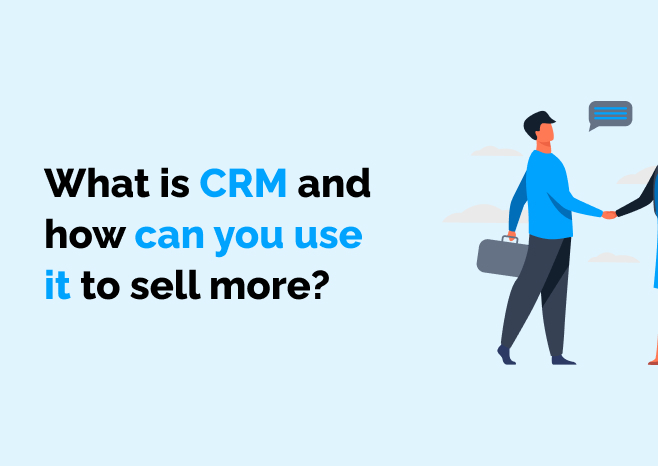Marketing automation workflows are essential for streamlining marketing processes, improving efficiency, and driving growth. By automating repetitive tasks, businesses can focus on strategic activities that enhance customer engagement and boost conversions. This article will explore the concept of marketing automation workflows, provide concrete examples, and offer recommendations for implementing them effectively.
What are Marketing Automation Workflows?
Marketing automation workflows are sequences of automated actions triggered by specific events or conditions. These workflows help manage and execute marketing tasks, such as email campaigns, social media posts, lead nurturing, and customer follow-ups, without manual intervention[1].
Key Components of Marketing Automation Workflows:
- Triggers: Events or conditions that initiate the workflow, such as a form submission, website visit, or email open.
- Actions: Automated tasks performed in response to triggers, such as sending an email, updating a contact record, or assigning a lead to a sales representative.
- Conditions: Criteria that determine whether certain actions should be executed, such as lead scoring thresholds or customer behavior patterns[2].
Why are Marketing Automation Workflows Important?
Marketing automation workflows are crucial for several reasons:
- Improved Efficiency: Automating repetitive tasks reduces the need for manual intervention, resulting in higher efficiency and fewer errors[3].
- Personalization at Scale: These workflows enable personalized communication with customers based on their preferences and behavior.
- Enhanced Customer Experience: Faster response times and tailored interactions improve customer satisfaction.
- Better Sales and Marketing Alignment: Marketing automation workflows help align sales and marketing efforts, leading to improved collaboration and higher-quality leads.
Concrete Examples of Marketing Automation Workflows
Here are five real-world examples of effective marketing automation workflows:
Example 1: Welcome Email Series
- Scenario: A new subscriber joins your email list.
- Workflow:
- Trigger: Subscriber joins the email list.
- Actions: Send a series of welcome emails over a period of time.
- Emails:
- Email 1: Welcome message and introduction to the brand.
- Email 2: Highlight key products or services.
- Email 3: Share customer testimonials and success stories.
- Email 4: Offer a special discount or promotion.
- Outcome: Engages new subscribers and builds a relationship with them.
Example 2: Lead Nurturing Campaign
- Scenario: A lead downloads an eBook from your website.
- Workflow:
- Trigger: Lead downloads the eBook.
- Actions: Send a series of follow-up emails to nurture the lead.
- Emails:
- Email 1: Thank you message and link to the eBook.
- Email 2: Additional resources related to the eBook topic.
- Email 3: Invitation to a webinar or demo.
- Email 4: Personalized offer based on the lead’s interests.
- Outcome: Nurtures the lead and moves them closer to conversion.
Example 3: Abandoned Cart Recovery
- Scenario: A customer adds items to their cart but does not complete the purchase.
- Workflow:
- Trigger: Customer abandons the cart.
- Actions: Send a series of reminder emails to encourage the purchase.
- Emails:
- Email 1: Reminder of the items left in the cart.
- Email 2: Highlight the benefits of the products.
- Email 3: Offer a discount or incentive to complete the purchase.
- Outcome: Recovers abandoned carts and increases sales.
Example 4: Event Promotion
- Scenario: You are hosting a webinar and want to promote it to your audience.
- Workflow:
- Trigger: Webinar registration page is live.
- Actions: Send a series of promotional emails to drive registrations.
- Emails:
- Email 1: Announcement of the webinar and registration link.
- Email 2: Highlight key speakers and topics.
- Email 3: Share testimonials from past attendees.
- Email 4: Reminder to register before the event.
- Outcome: Drives webinar registrations and increases attendance.
Example 5: Customer Feedback Request
- Scenario: A customer makes a purchase and you want to gather feedback.
- Workflow:
- Trigger: Customer completes a purchase.
- Actions: Send a series of follow-up emails to request feedback.
- Emails:
- Email 1: Thank you message and request for feedback.
- Email 2: Reminder to provide feedback.
- Email 3: Offer an incentive for completing the feedback survey.
- Outcome: Gathers valuable customer feedback and improves customer satisfaction.
Recommendations for Implementing Marketing Automation Workflows
Implementing marketing automation workflows involves several key steps:
- Define Your Goals:
- Determine the specific objectives of your workflows, such as lead generation, customer engagement, or sales conversion. Clearly define what you want to achieve with each workflow.
- Identify Triggers and Actions:
- Identify the events or conditions that will trigger your workflows and the actions that will be performed in response. Ensure that triggers and actions align with your goals.
- Segment Your Audience:
- Divide your audience into segments based on demographics, behavior, and interests. This allows for more targeted and personalized workflows.
- Create High-Quality Content:
- Develop engaging and valuable content for your workflows, such as emails, landing pages, and social media posts. Ensure that the content aligns with your audience’s needs and preferences.
- Test and Optimize:
- Continuously test different elements of your workflows, such as triggers, actions, and content. Use A/B testing to identify what works best and optimize your strategies.
- Monitor Performance:
- Track the performance of your workflows using analytics and reporting tools. Monitor key metrics, such as open rates, click-through rates, and conversion rates, to measure success.
Conclusion
Marketing automation workflows are essential for streamlining marketing processes, improving efficiency, and driving growth. By understanding their importance, following best practices, and leveraging concrete examples, businesses can create effective workflows that enhance customer engagement and boost conversions.
How TwiLead Platform Can Help
TwiLead is an all-in-one sales and marketing automation platform designed to enhance your marketing automation efforts. With TwiLead, you can:
- Automate Marketing Workflows: Use TwiLead’s tools to create customized marketing automation workflows that streamline your processes and improve efficiency.
- Optimize Content and Design: Leverage TwiLead’s content and design optimization features to create high-quality and engaging marketing materials.
- Track Performance: Monitor the success of your marketing workflows with TwiLead’s comprehensive reporting and analytics tools.
- Personalize Campaigns: Deliver personalized content and interactions at scale with TwiLead’s marketing automation features.
- Collaborate Seamlessly: Ensure seamless collaboration between marketing and sales teams with TwiLead’s unified CRM platform.
By leveraging TwiLead’s robust features, businesses can streamline their marketing automation processes, save time, and drive more revenue. Whether you’re looking to automate marketing tasks, optimize content, or track performance, TwiLead provides the tools and support needed to succeed in today’s competitive market.
References
[1] Top 10 Marketing Automation Tools for 2025 – quickcreator.io
[2] Top 8 Marketing Automation Trends in 2025 – Saffron Edge



